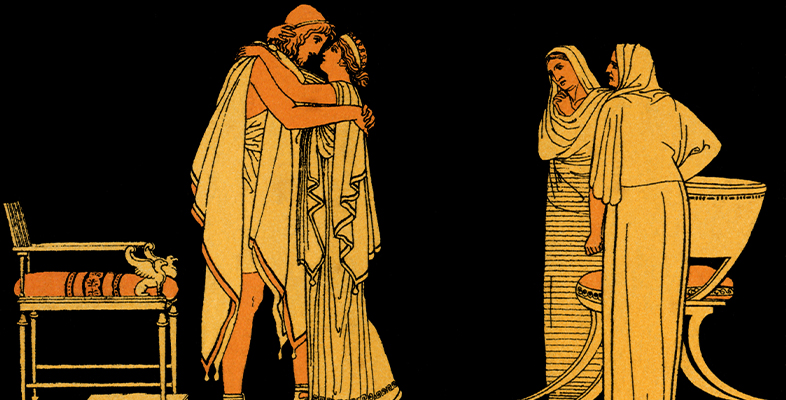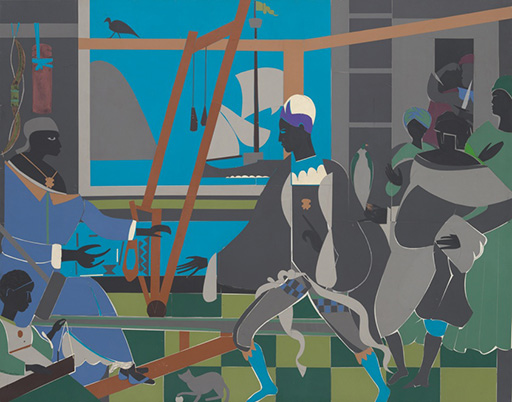4.1 The reunion of Penelope and Odysseus
The reunion of Penelope and Odysseus is far from straightforward. When he first arrives back on Ithaca, the goddess Athena disguises him as a beggar, wearing filthy clothes, so that he can approach the palace and observe what has been happening in his absence. When he first meets Penelope he is still wearing this disguise; they even have a conversation in which Odysseus pretends to be a Cretan prince who once entertained Penelope’s husband (Odyssey 19.164–202). He tells her in the course of this conversation that Odysseus will soon be home, although Penelope, after twenty years of waiting, finds it hard to believe that this is true (Odyssey 19.261–316). Now that her shroud trick has been revealed she is unable to delay the decision as to which suitor to marry any longer, so she announces that she will stage a contest: she will marry whichever man is able to string Odysseus’ enormous bow and shoot an arrow through twelve axes (Odyssey 21.1–79). With Penelope elsewhere in the palace, the suitors each try their hand; none of them is able to fulfil the task. Eventually the ‘beggar’ steps forward and successfully carries out the challenge, thereby revealing himself as Odysseus. In brutal scenes in Book 22, Odysseus, with the help of Telemachus, slaughters the suitors along with the female slaves of Penelope who had been disloyal to her.

